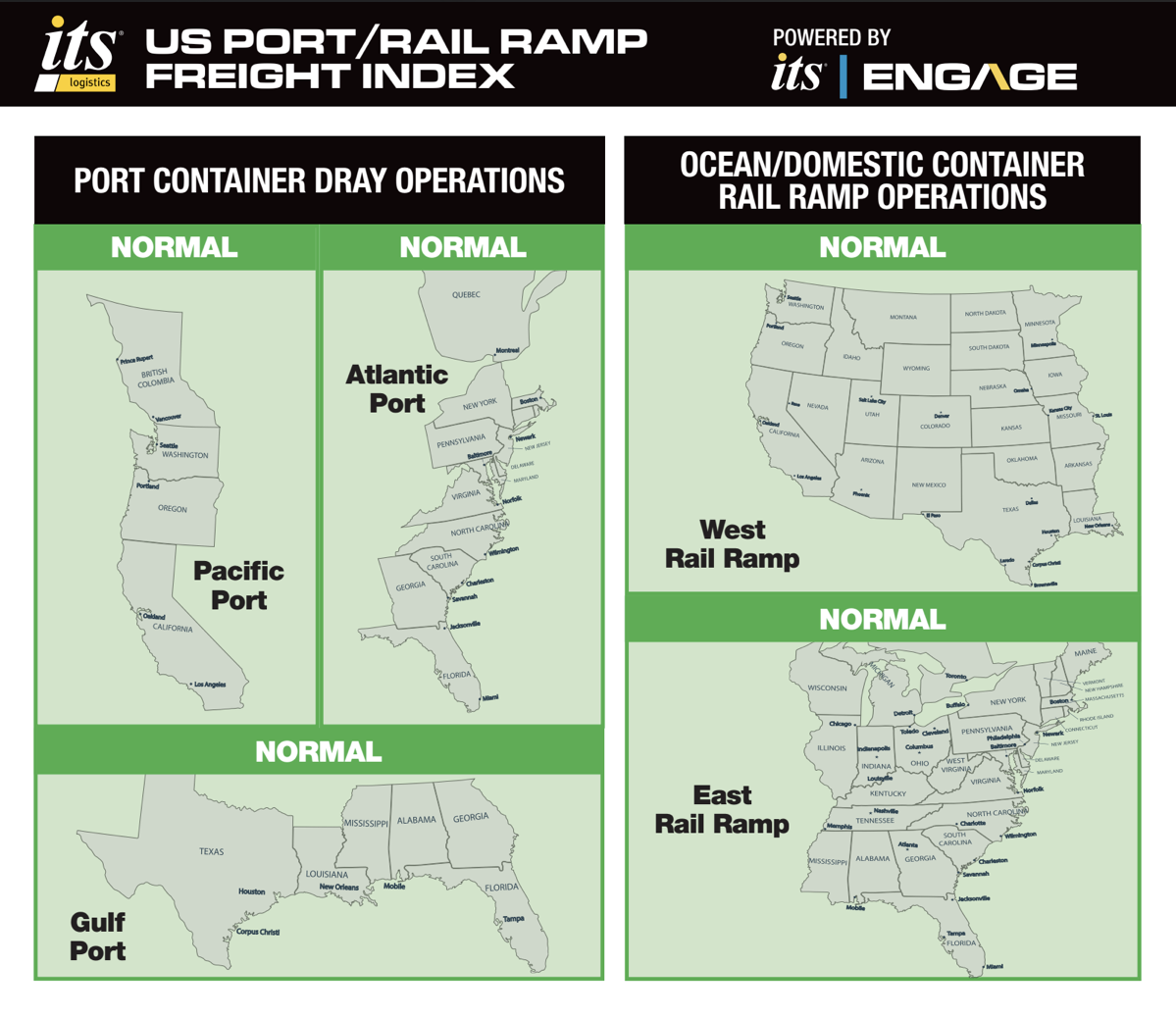FAQ: ITS Logistics August Port Rail Ramp Index - Tariff Impacts and Supply Chain Trends

Summary
What is the main focus of the ITS Logistics August Port/Rail Ramp Freight Index?
The index focuses on current freight conditions, revealing that export volumes remain challenged due to ongoing tariff negotiations while inbound volumes, especially to the U.S. West Coast, remain strong, with additional concerns about trucker financial health.
Why are export volumes currently challenged according to the index?
Export volumes are challenged because tariff negotiations between the U.S. and other countries are ongoing, creating uncertainty and disruption in global trade patterns.
What impact do tariff negotiations have on freight costs?
Tariff negotiations are expected to increase freight costs, especially in the spot market, as shippers work to meet pent-up demand once agreements are reached between countries.
Who is Paul Brashier and what insights does he provide?
Paul Brashier is the Vice President of Global Supply Chain for ITS Logistics who notes that industry professionals should anticipate export volume surges following tariff agreements, increased freight costs, strong inbound volumes for retail peak shipments, and challenges with day-side terminal congestion and empty termination availability.
What was the significance of the May 2025 U.S.-China tariff agreement mentioned?
The May 2025 agreement between the U.S. and China to roll back tariffs and implement a 90-day negotiation pause was expected to have immediate effects on global shipping markets, causing transportation rates to surge as importers rushed to leverage temporary tariff reductions.
How are current tariffs affecting import volumes according to the NRF report?
The National Retail Federation’s Global Port Tracker report confirms that import cargo volume at major U.S. container ports is forecasted to end 2025 at 5.6% below 2024’s volume due to the impact of current trade policies and existing tariffs.
What are the broader economic impacts of these tariff policies?
Tariffs are increasing consumer prices and causing businesses to experience fewer goods on shelves, with small businesses especially struggling to remain open, while consumers are increasing spending in anticipation of future price hikes and potential shortages.
Where are the most significant supply chain impacts being felt?
The most significant impacts are being felt at U.S. West Coast ports where inbound volumes remain strong, with reported day-side congestion at terminals and challenges with empty termination availability.
Why is trucker financial health an escalating concern in the industry?
Trucker financial health is an escalating concern because major West Coast drayage providers are ceasing operations, creating instability in the transportation capacity needed to handle both strong inbound volumes and expected export surges.

This story is based on an article that was registered on the blockchain. The original source content used for this article is located at citybiz
Article Control ID: 168598